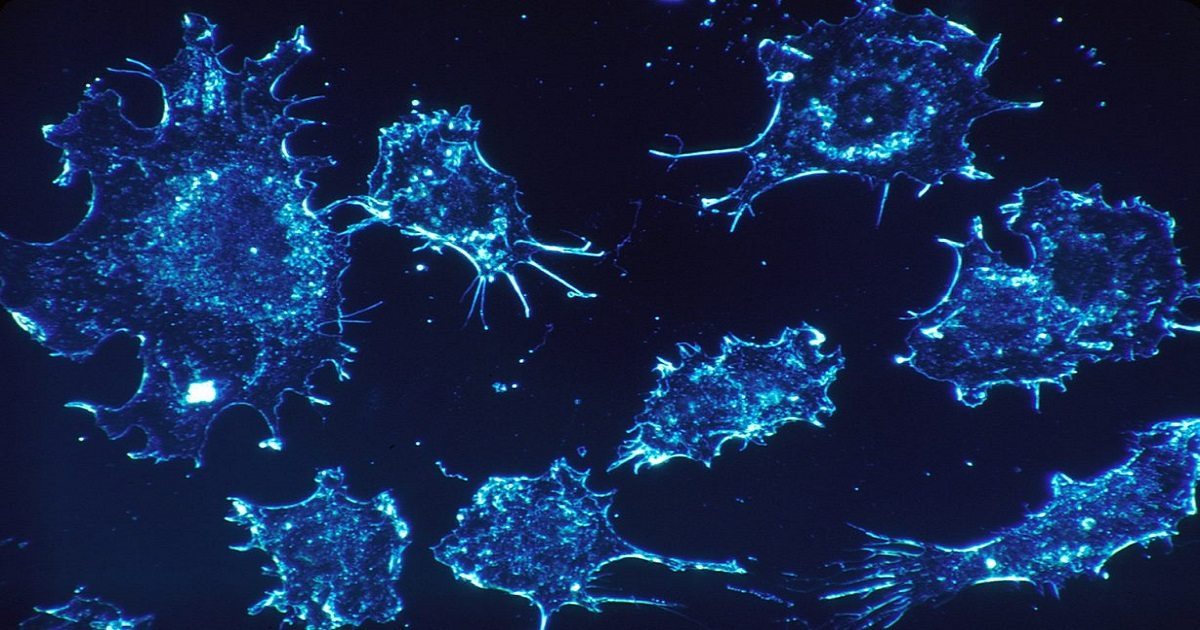Author: Nancy Meredith

Some Immune Cells Thought to Help Fight Mesothelioma and Other Cancers May Actually Aid Metastasis
The National Cancer Society reports that 90 percent of all cancer deaths occur when the cancer cells migrate beyond the primary cancer site to distant organs. Stopping tumor growth and preventing metastasis is especially critical for increasing survival in mesothelioma and other cancer patients. Now, researchers believe they have found yet another way cancer cells spread throughout a patient’s body.
According to an April 6 press release from the Georgia Cancer Center at Augusta University (http://jagwire.augusta.edu/archives/43129), a team of researchers report that while cytokines are primarily useful in helping fight cancer, they found that they can also lead to cancer metastasis. These “immature” immune cells may be hijacked by cancer cells to help the cancer spread beyond its primary site.
“There is a very intricate balance in the immune system that is usually anti-tumorigenic, meaning it eliminates tumors, but in some cases, if this balance is altered, these cells may actually help tumors grow and develop into full-blown metastatic disease,” said Dr. Hasan Korkaya, molecular and cancer biologist at the Georgia Cancer Center and Medical College of Georgia at Augusta University.
Cancer spreads through the blood stream, but when cancer cells break free they have to get past the immune system where they are attacked and broken down. According to the researchers, the cancer cells use myeloid-derived suppressive cells (MDSCs) that come from the bone marrow, like a support system to dodge the immune system and metastasize.
The researchers note that MDSCs have been shown to suppress the immune system, however, their discovery that they also enable the spread of cancer is surprising. MDSCs seem to be directed by the cytokines secreted by the tumor. Cytokines, typically secreted by the immune system, can influence other cell types. The researchers found that tumors can also secrete cytokines that then signal the immature MDSCs to support the cancer growth.
“They are being schooled toward facilitating tumor cell growth and metastasis,” Korkaya said. The tumors continue to control the cytokines, according to the researchers, to keep the MDSCs from maturing, thus they can keep using them to grow the cancer.
In a recent study one researcher said, “Metastasis is currently incurable and remains one of the key targets of cancer research.” The physicians and patients in the mesothelioma community hope the researchers at Augusta University continue this line of research to help bring a solution to halting cancer’s uncontrolled growth.
Mesothelioma is diagnosed in close to 3,000 Americans each year. There is no cure for the asbestos-caused cancer.
To find out more, read the full study in the Feb. 20 issue of Nature Communications. http://www.nature.com/ncomms/2016/160524/ncomms11734/full/ncomms11734.html

Accelerated Approval Granted to Drug in Mesothelioma Research Pipeline
In July, MesotheliomaHelp reported on a phase I clinical trial where various cancers, including mesothelioma, were being tested for the safety and tolerability of the drug avelumab. Now, the maker of the drug reports the U.S. Food and Drug Administration has granted accelerated approval to Bavencio (avelumab) for the treatment of patients with metastatic Merkel cell carcinoma (MCC).
EMD Serono Inc. reports the approval was based on the results of the JAVELIN clinical trial where of 88 patients with MCC who had been previously treated with at least one chemotherapy regimen, 33 percent experienced complete or partial shrinkage of their tumors. The response lasted for more than six months in 86 percent of responding patients and more than 12 months in 45 percent of responding patients, according to the FDA.
“The scientific community continues to make advances targeting the body’s immune system mechanisms for the treatment of various types of cancer,” Richard Pazdur, MD, of the FDA office of hematology and oncology products, said in a March 23 press release. “These advancements are leading to new therapies — even in rare forms of cancer where treatment options are limited or non-existent.”
Bavencio is an investigational immunotherapy drug that targets the PD-L1 protein. The drug works by blocking signals from PD-L1 tumors, activating the immune system, allowing it to take over and attack and kill cancer cells. Merck KGaA, Darmstadt, Germany, and Pfizer have formed a strategic alliance to co-develop and co-commercialize the drug. This is the first FDA-approved therapy for patients with MCC.
Metastatic MCC is a rare and aggressive skin cancer, with fewer than half of patients surviving more than one year and fewer than 20% surviving beyond five years.
Like MCC, mesothelioma is a rare, orphan disease that is challenging to treat and often recurs in patients. Prognosis for mesothelioma is often less than 18 months. With an initial positive result for mesothelioma patients with this drug in the JAVELIN clinical trial, the mesothelioma community is hoping for continued positive results that could lead to a new treatment for patients with the asbestos-caused cancer.
According to the FDA, Accelerated Approval enables the FDA to approve drugs for serious conditions to fill an unmet medical need using clinical trial data that is thought to predict a clinical benefit to patients.
Bavencio also received Orphan Drug designation, which provides incentives to assist and encourage the development of drugs for rare diseases.
“Today is a significant milestone for people fighting metastatic Merkel cell carcinoma, who until now have not had any options beyond chemotherapy,” said Albert Bourla, Group President, Pfizer Innovative Health in a March 23 press release. “This approval demonstrates the power of collaboration to accelerate meaningful new choices for cancer patients.”
Pleural mesothelioma is a terminal cancer of the lining of the lungs caused by past exposure to asbestos. The cancer is diagnosed in nearly 3000 Americans each year.
For more information about the ongoing JAVELIN clinical trial see ClinicalTrials.gov.
Sources:
- ClinicalTrials.gov
https://clinicaltrials.gov/ct2/results?term=%22malignant+mesothelioma%22&recr=Open&pg=1 - FDA office of hematology and oncology products
https://www.fda.gov/NewsEvents/Newsroom/PressAnnouncements/ucm548278.htm - Albert Bourla, Group President, Pfizer Innovative Health
http://media.emdserono.com/2017-03-23-FDA-Grants-Approval-for-BAVENCIO-R-avelumab-the-First-Immunotherapy-Approved-for-Metastatic-Merkel-Cell-Carcinoma

Probe May Guide Surgeons to Successful Removal of Mesothelioma Cells
MesotheliomaHelp has reported on numerous attempts by researchers to develop a tool that causes cancer cells to glow allowing surgeons to home in on them during surgery. Now, researchers believe they have developed a probe that will light up cancer cells and give surgeons confidence that they can remove all cancer cells.
Researchers from Michigan Tech focused on beta-galactosidase, a key enzyme with a “long track record in medical science,” according to the researchers. The probe the team developed bonds to the beta-galactosidase leading to a bright glow under fluorescent light.
“Doctors need to pinpoint cancer tissue, but that can be hard,” said Haiying Liu, lead researcher and a chemistry professor at Michigan Technological University. “If we could make beta-galactosidase glow brightly during surgery, it could play a major role in improving outcomes.”
The researchers believe their light-up approach is superior to others for the following reasons:
- The near-infrared glow can penetrate deeper into the tissue giving surgeons a view of tumors underneath healthy tissue.
- The glow is a bright white light and not blue or green like others that can be distracting.
- The fluorescence is “stable and long lasting” making it useful in long cancer surgeries.
Mesothelioma, an unusual form of cancer caused by exposure to airborne asbestos fibers, often has a complex growth pattern making complete surgical removal a very difficult task. Surgeons often have to guess how much tissue to remove, then send samples to the lab for confirmation that they got it all. They also do not want to remove too much healthy tissue. Use of the probe could eliminate guesswork.
“Doctors want to remove all the cancer, but they also don’t want to cut too much,” Liu said. “We want to make their job a little easier.”
Currently, there is no treatment available for mesothelioma that has shown a 100% efficacy rate. Mesothelioma cancer cells have proven to be resistant to the standard treatments of chemotherapy and radiation. While not all mesothelioma patients are candidates for surgery, those who are, may see a higher success rate with surgeons able to pinpoint all cancer cells.
Read the full study in the March 8 issue of the journal Analytic Chimica Acta.

Blood Test Tool For Early Detection of Mesothelioma
MesotheliomaHelp has reported multiple times on the ongoing research to use liquid biopsies or blood samples to detect and manage the treatment of cancer. The non-invasive approach is easier on patients and can return results more quickly. Now, researchers report they have developed a tool that can look at a blood sample and determine whether cancer is present and its point of origin.
Find out more about research using blood tests here and here.
Researchers from The University of California, Los Angeles are using their proprietary tool CancerLocator to detect circulating cell-free DNA and to look at the genome-wide DNA methylation profile to detect cancer, according to a March 24 article in GenomeWeb. The tool, in effect, cross checks the DNA methylation data against a database the team developed that contains information about methylation markers common across cancers and specific to certain tissues, in seven cancers, including lung tissue.
“We have developed a computer-driven test that can detect cancer, and also identify the type of cancer, from a single blood sample,” said lead researcher Jasmine Zhou, Department of Pathology and Laboratory Medicine, David Geffen School of Medicine, UCLA.
During the study, the team found that the CancerLocator outperformed both the random forest and support vector machine standard algorithms in simulated data as well as with live cancer data. The test was also effective for detecting early-stage cancers.
Research shows that metastasis is the cause of nearly 90 percent of cancer deaths. Stopping tumor growth and preventing metastasis is critical, especially for mesothelioma and lung cancer where the diseases are highly aggressive. This can only be achieved if the cancer is detected early.
Mesothelioma, a rare form of cancer caused by past exposure to asbestos, is highly aggressive and is resistant to many cancer treatments making it a difficult disease to treat effectively. The prognosis for mesothelioma patients is usually grim: the average survival time varies from 4 – 18 months after diagnosis. Early detection can mean prolonged survival.
Although there are various cancer screening tools available, such as the colonoscopy for colon cancer, many of the tests are invasive and painful for the patients. However, in this case, there is no reliable method for early detection of the deadly mesothelioma cancer.
Zhou notes that with CancerLocator “the higher the fraction of tumor DNAs in blood, the more accurate the program was at producing a diagnostic result. Therefore, tumors in well-circulated organs, such as the liver or lungs, are easier to diagnose early using this approach than in less-circulated organs such as the breast.”
“The technology is in its infancy and requires further validation, but the potential benefits to patients are huge,” said Zhou.
Each year nearly 3,000 Americans are diagnosed with mesothelioma. The key to increased life expectancy when battling this cancer is early detection.
Read the full study in the March 24 issue of Genome Biology.

Why Is Mesothelioma Increasing?
There has been a significant increase in death rates from mesothelioma in the past decade. The increase in mesothelioma cases has been attributed to the lack of a complete ban on asbestos in the U.S., significant natural disasters that destroyed buildings containing asbestos materials, and the Sept. 11 terror attacks that exposed rescue workers to the cancer-causing material, among other factors.
How Many Cases of Mesothelioma Are Diagnosed Each Year?
 Because the life expectancy for mesothelioma patients is generally one to two years, the number of cases diagnosed each year can be measured relative to the death rate. From 2005 to 2015, researchers saw a 7.8 percent increase in death rates from mesothelioma, according to the latest Global Burden of Disease Study (GBD 2015) published Oct. 8, 2016, in The Lancet. The study notes that the number of deaths worldwide from mesothelioma in 2015 was 33,400.
Because the life expectancy for mesothelioma patients is generally one to two years, the number of cases diagnosed each year can be measured relative to the death rate. From 2005 to 2015, researchers saw a 7.8 percent increase in death rates from mesothelioma, according to the latest Global Burden of Disease Study (GBD 2015) published Oct. 8, 2016, in The Lancet. The study notes that the number of deaths worldwide from mesothelioma in 2015 was 33,400.

In another study focusing on the U.S. alone, an estimated 15,000 Americans die every year from asbestos-related diseases, with mesothelioma accounting for nearly 3,000 deaths per year. The Environmental Working Group (EWG) indicates that during the period from 1999 to 2013, an estimated 127,579 to 159,480 Americans died from asbestos exposure.
What Is Causing the Rise in Mesothelioma in the U.S.?
There are several factors that may be contributing to the increase in mesothelioma cases in the United States:
 Asbestos use has not been banned completely in the U.S., and asbestos-containing materials remain in place in older homes, businesses, and schools. “Approximately 1.3 million workers in construction and general industry potentially are being exposed to asbestos during maintenance activities or remediation of buildings containing asbestos,” according to a report from the Centers for Disease Control and Prevention and the National Institute for Occupational Safety and Health. Construction photo
Asbestos use has not been banned completely in the U.S., and asbestos-containing materials remain in place in older homes, businesses, and schools. “Approximately 1.3 million workers in construction and general industry potentially are being exposed to asbestos during maintenance activities or remediation of buildings containing asbestos,” according to a report from the Centers for Disease Control and Prevention and the National Institute for Occupational Safety and Health. Construction photo Devastating storms, including Hurricane Katrina in 2005 and Hurricane Sandy in 2012, led to the destruction of buildings with asbestos-containing materials, increasing the risk of asbestos exposure. Future storms will have the same effect. Hurricane damage photo
Devastating storms, including Hurricane Katrina in 2005 and Hurricane Sandy in 2012, led to the destruction of buildings with asbestos-containing materials, increasing the risk of asbestos exposure. Future storms will have the same effect. Hurricane damage photo The 9/11 terrorist attacks exposed an estimated 41,000 people to asbestos and other toxins during the rescue and clean-up efforts after the Twin Towers collapsed, according to the CDC. 9/11 rescue worker photo
The 9/11 terrorist attacks exposed an estimated 41,000 people to asbestos and other toxins during the rescue and clean-up efforts after the Twin Towers collapsed, according to the CDC. 9/11 rescue worker photo Mineral mines in some states such as Montana and Minnesota may have contributed to higher than expected rates of mesothelioma. Miner photo
Mineral mines in some states such as Montana and Minnesota may have contributed to higher than expected rates of mesothelioma. Miner photo
Mesothelioma can develop 15 to 60 years after asbestos exposure occurs. That means any time there is an issue, such as a hurricane, for example, the potential for the rising number of mesothelioma cases extends for many more decades. Preventing asbestos exposure is the only sure way to halt increased rates of mesothelioma.
Which States Have the Most Mesothelioma Cases?
The number of mesothelioma cases is higher in the most populous states. California, Florida, Pennsylvania, New York, and Texas had the most asbestos-related deaths over the 14-year period covered in the EWG study. However, Delaware, Maine, Montana, Pennsylvania, Washington, and West Virginia had death rates that were 50 percent to 100 percent higher than the national average of 4.9 per 100,000 people.
I think we should separate into two charts here for comparison:
| State | NUMBER OF MESOTHELIOMA DEATHS (1999-2013) |
| California | 3,997 |
| Florida | 2,619 |
| Pennsylvania | 2,601 |
| New York | 2,253 |
| Texas | 2,064 |
| State | ASBESTOS-RELATED DEATH RATES (1999-2013)* |
| Maine | 10.1 |
| West Virginia | 9 |
| Montana | 7.9 |
| Delaware | 7.6 |
| Pennsylvania | 7.5 |
| Washington | 7.5 |
*Deaths per 100,000 people
What Does the Future Hold for Mesothelioma Cases in the U.S.?
“Ensuring a future decrease in mesothelioma mortality requires meticulous control of exposures to asbestos and other materials that might cause mesothelioma.”
Centers for Disease Control and Prevention, “Malignant Mesothelioma Mortality – United States, 1999-2005“
Free Mesothelioma Patient & Treatment Guide
We’d like to offer you our in-depth guide, “A Patient’s Guide to Mesothelioma,” absolutely free of charge.
It contains a wealth of information and resources to help you better understand the condition, choose (and afford) appropriate treatment, and exercise your legal right to compensation.
Download Now Asbestos use has not been banned completely in the U.S., and asbestos-containing materials remain in place in older homes, businesses, and schools. “Approximately 1.3 million workers in construction and general industry potentially are being
Asbestos use has not been banned completely in the U.S., and asbestos-containing materials remain in place in older homes, businesses, and schools. “Approximately 1.3 million workers in construction and general industry potentially are being  Devastating storms, including Hurricane Katrina in 2005 and Hurricane Sandy in 2012, led to the destruction of buildings with asbestos-containing materials, increasing the risk of asbestos exposure. Future storms will have the same effect. Hurricane damage photo
Devastating storms, including Hurricane Katrina in 2005 and Hurricane Sandy in 2012, led to the destruction of buildings with asbestos-containing materials, increasing the risk of asbestos exposure. Future storms will have the same effect. Hurricane damage photo The 9/11 terrorist attacks exposed an estimated 41,000 people to asbestos and other toxins during the rescue and clean-up efforts after the Twin Towers collapsed, according to the CDC. 9/11 rescue worker photo
The 9/11 terrorist attacks exposed an estimated 41,000 people to asbestos and other toxins during the rescue and clean-up efforts after the Twin Towers collapsed, according to the CDC. 9/11 rescue worker photo Mineral mines in some states such as Montana and Minnesota may have contributed to higher than expected rates of mesothelioma. Miner photo
Mineral mines in some states such as Montana and Minnesota may have contributed to higher than expected rates of mesothelioma. Miner photo